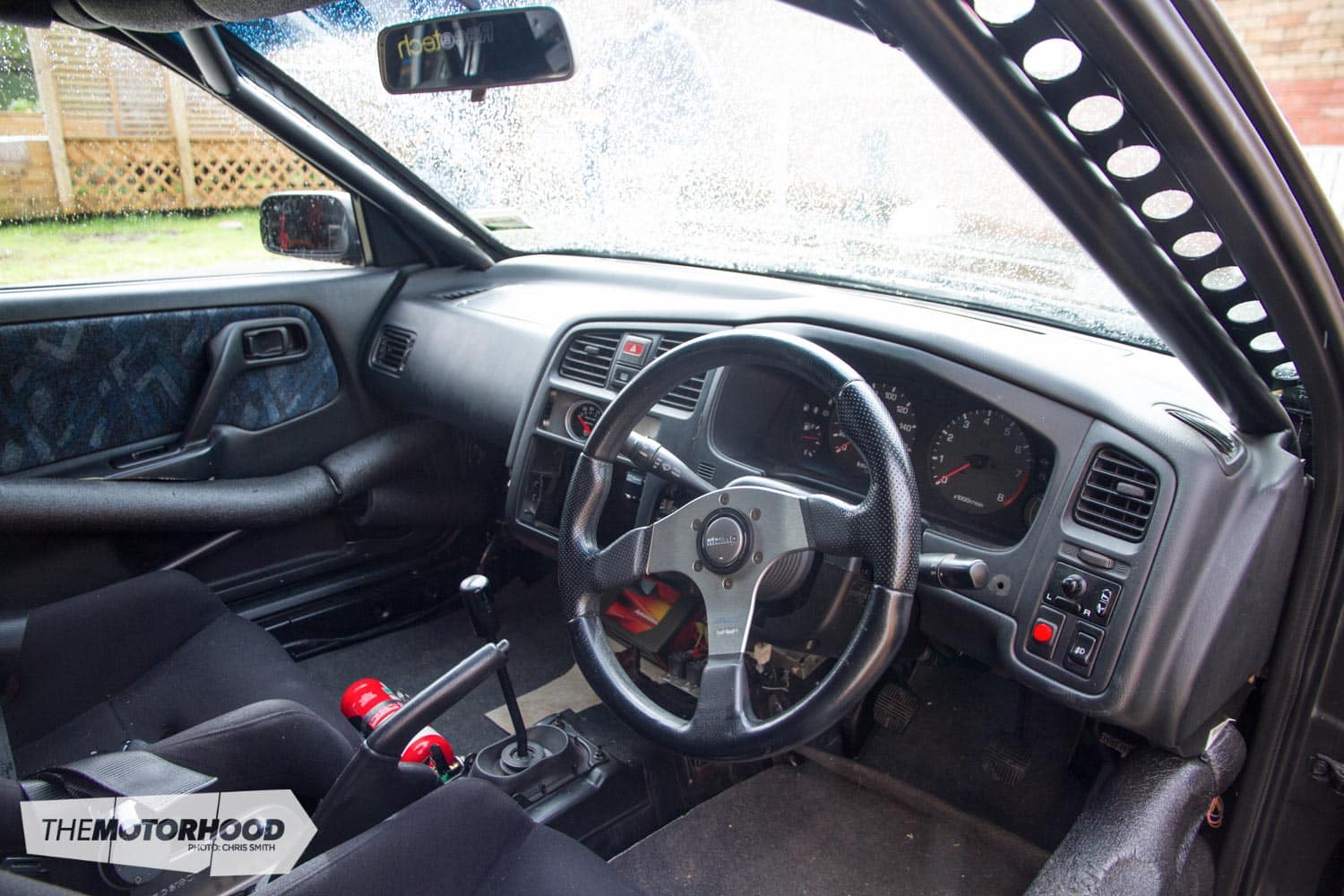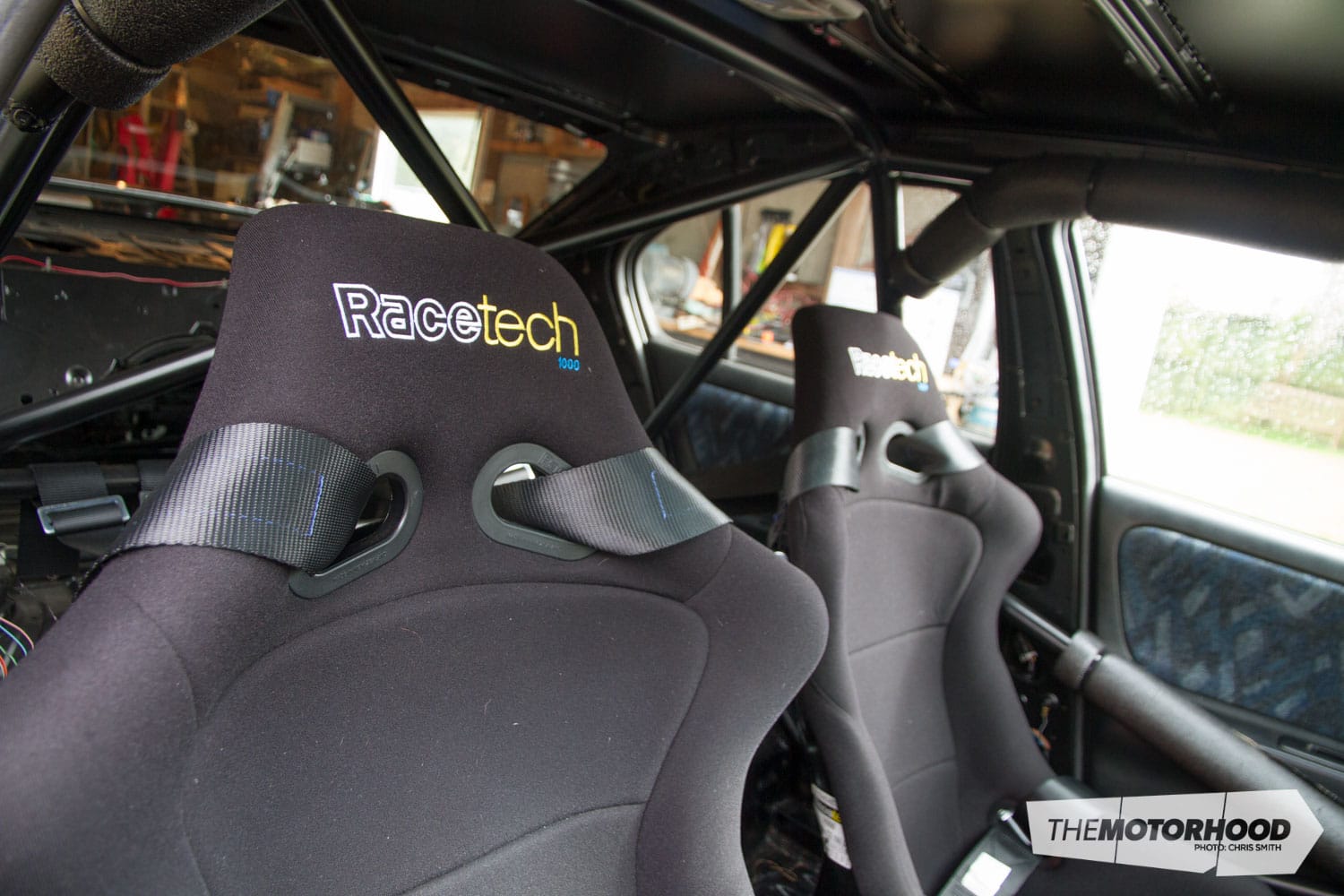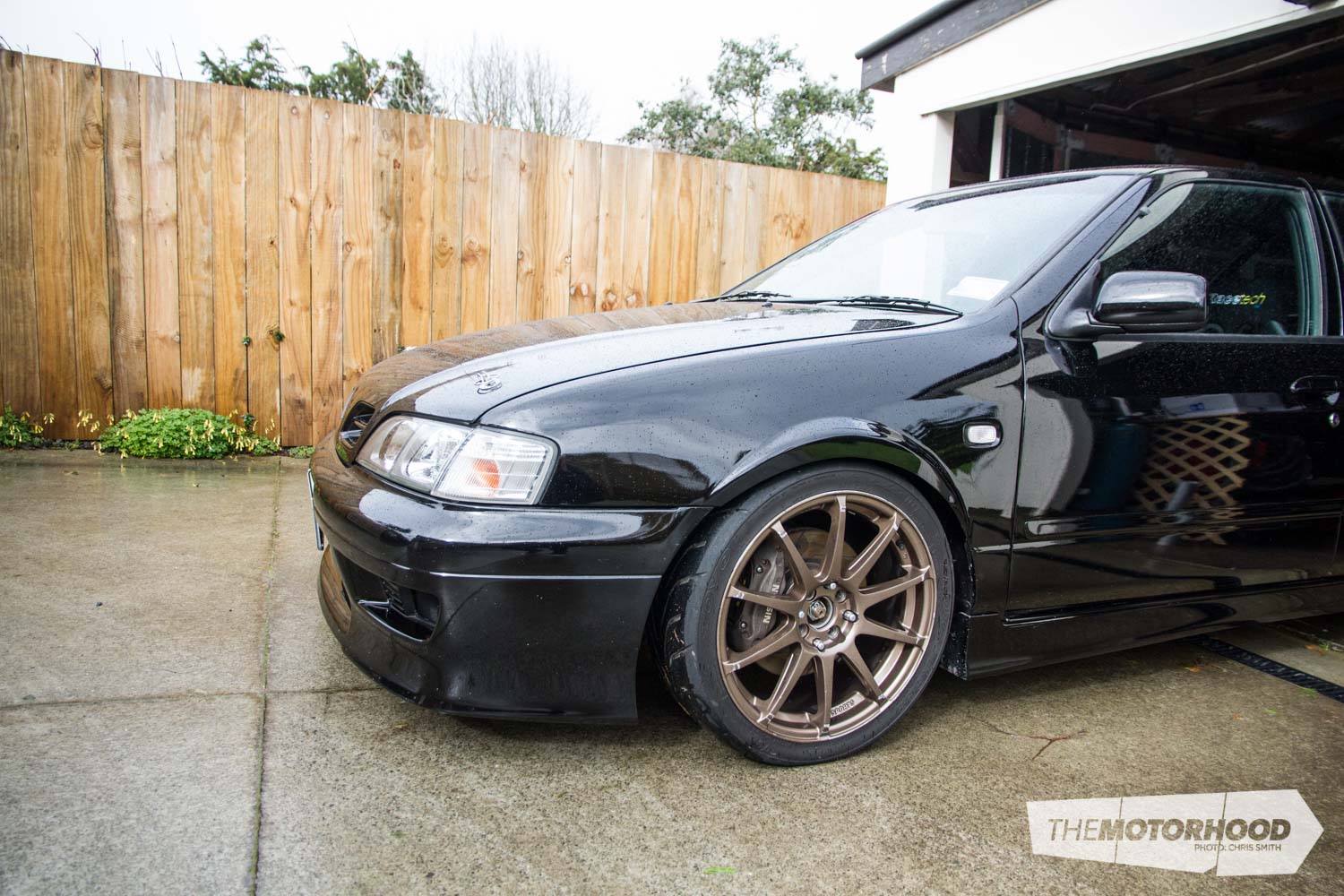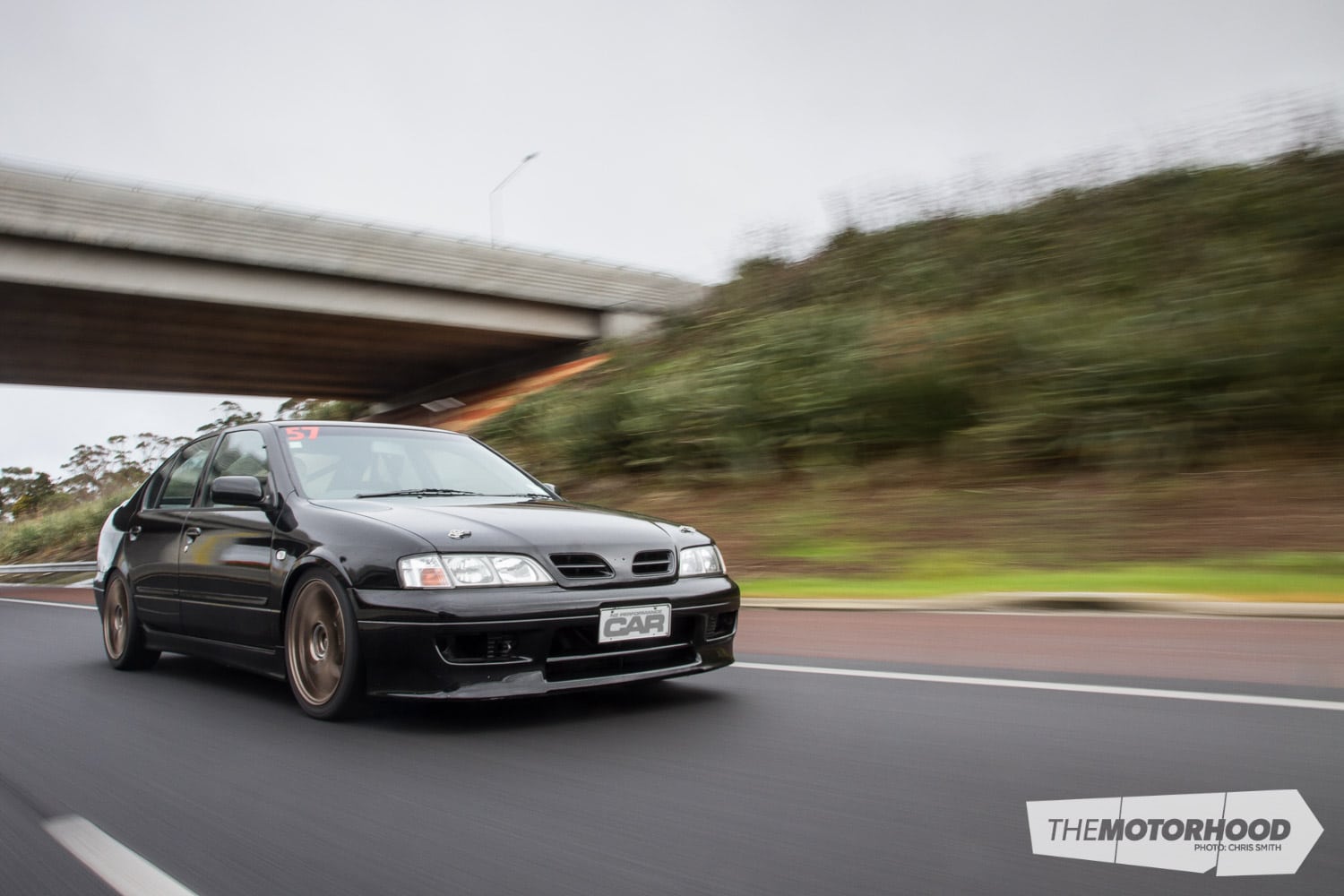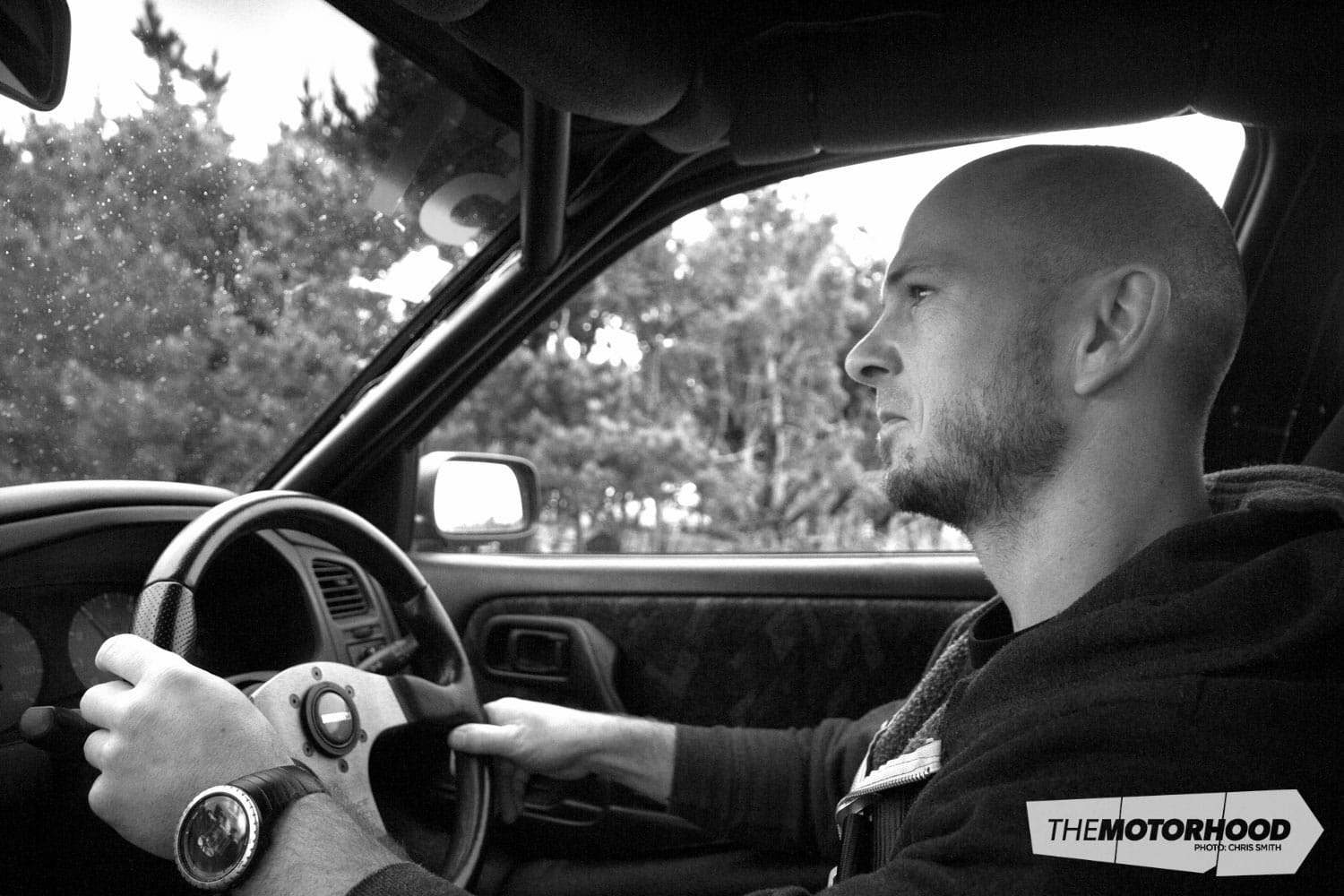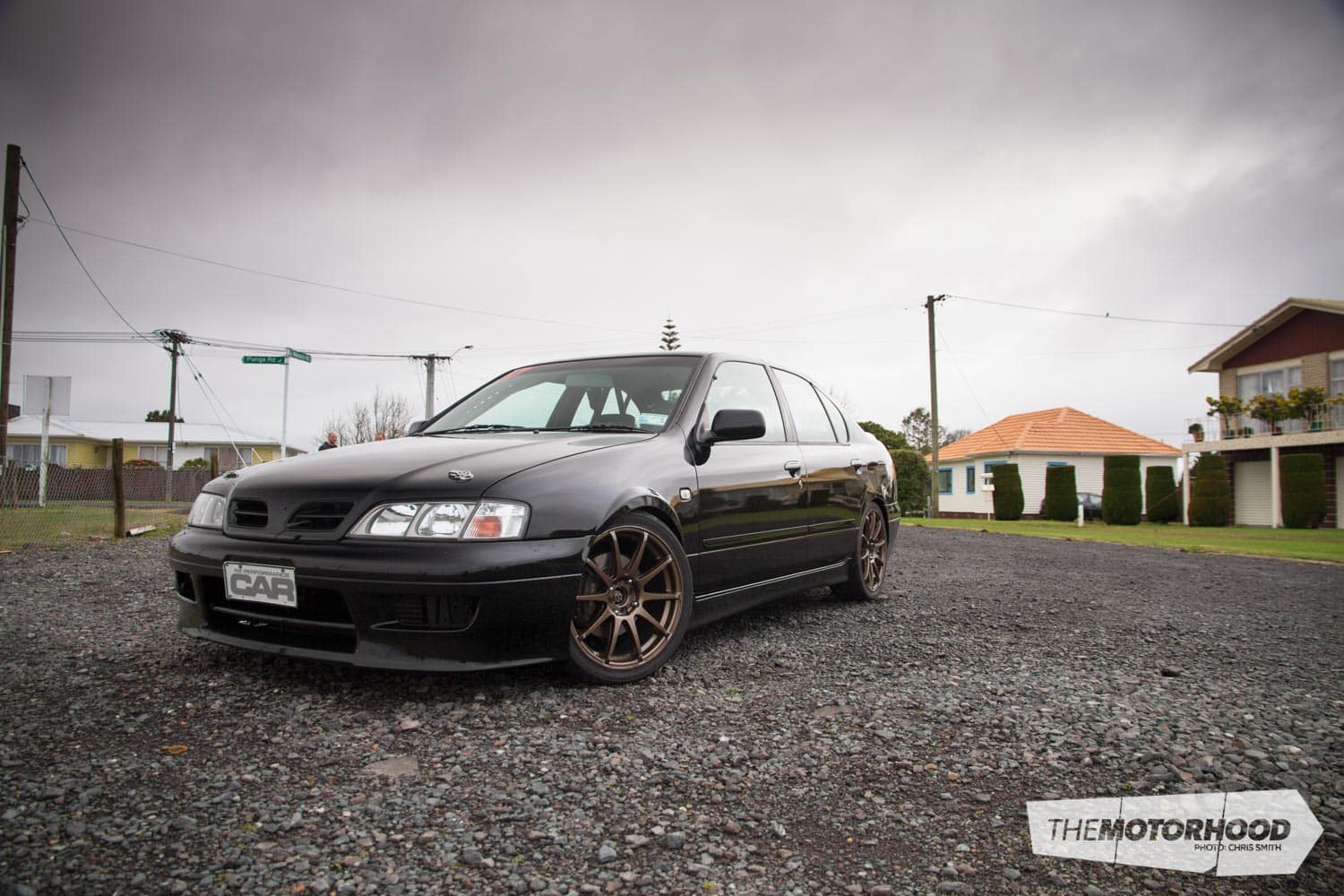We don’t only feature fully modified vehicles in NZ Performance Car magazine — the mildly modified daily drivers get a look in too! It doesn’t matter what it is, if you’re passionate about it, modify it, and drive it to work every day, we’ll showcase it.
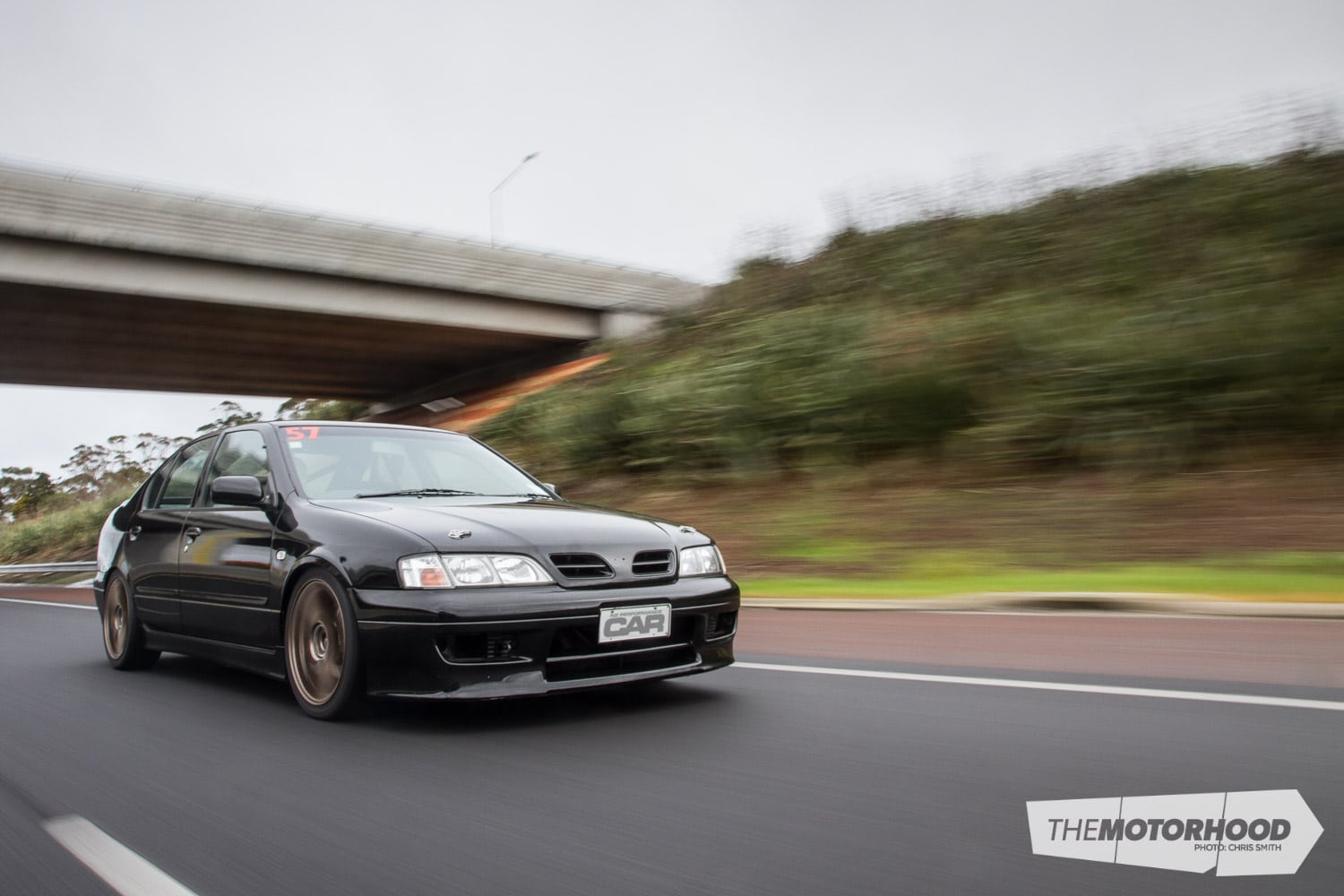
Owner: Chris Johns
Location: West Auckland
Occupation: Principal Physiotherapist at Physio by Design
Make/model: 1996 Nissan Primera (P11)
Engine: SR20VE, pod filter, custom intake, custom cold-air box, Walbro fuel pump, SR20DET 333cc injectors, aftermarket leads, custom stainless-steel headers, 2.5-inch stainless-steel exhaust system, two bullet resonators, large oval rear muffler, SR16VE ECU, oil cooler, remote oil filter, MSD intake and exhaust rpm cam switches, custom stainless-steel oil catch can, G Spec aluminium crank and water-pump pulleys, Nolathane solid engine mounts
Drivetrain: N15 VZ-R LSD, Exedy five-puck heavy-duty, SR16VE flywheel
Interior: Eight-point roll cage, Jamex six-point harnesses, Racetech RT1000 seats, Momo racing wheel, Nismo titanium gear knob, short shifter kit, oil pressure gauge, custom bilge blower to demist windscreen
Exterior: Custom steel front flares, widened rear guards, aerial delete, gloss-black respray, P11 facelift headlights
Suspension/brakes: BC BR series coilovers, uprated rear springs, Nolathane bushes, Nissan GTS25T four-pot front calipers and rotors, braided brake lines, brake ducting
Wheels/tyres: 17-inch Advanti race wheels, 205/40R17 Toyo R888s, 15mm bolt-on spacers
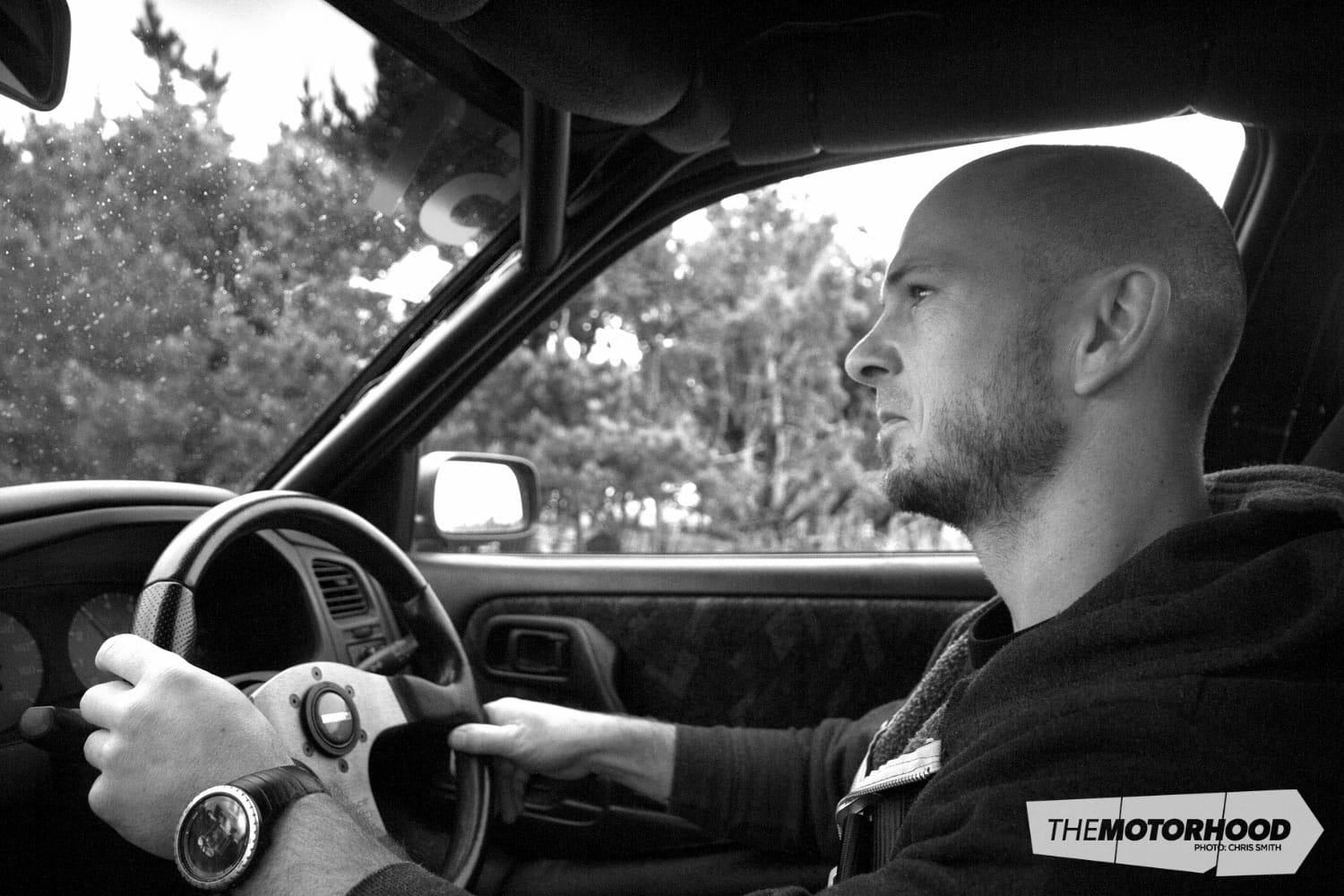
NZ Performance Car: Hey Chris, that’s one tidy race car you’ve got there. What prompted you to build a Primera, and for what motorsport discipline?
Chris Johns: Thanks. I’ve always had a thing for the Primeras of the ’90s, namely BTCC. I have built a couple of Pulsars over the years and struggled with stability in hill-climb events, so the double wishbone suspension set-up in the Primera made a lot of sense. After looking into it a bit more, the weight difference between an N15 Pulsar and a P11 wasn’t significant enough for me to worry about. Having weighed up the pros and cons of further handling benefits, I chose to go with the P11 shell instead.
It appears you’ve really focused on making the Primera handle before going crazy with power, why was that?
I have built all-out turbo cars in the past and, as much fun as they are, throwing money at going in a straight line only took me so far. I started club racing, and the car I had was great for bent sprints and straighter events, but on the more technical hill climbs I was struggling to get the power to the ground and stay competitive, so I decided to build a car based on a good chassis for going through the corners fast, and holding the speed in a straight line. There is definitely still more to come, but the Primera will need to go on a severe diet, and I’m toying with the idea of fabricating some adjustable roll bars.
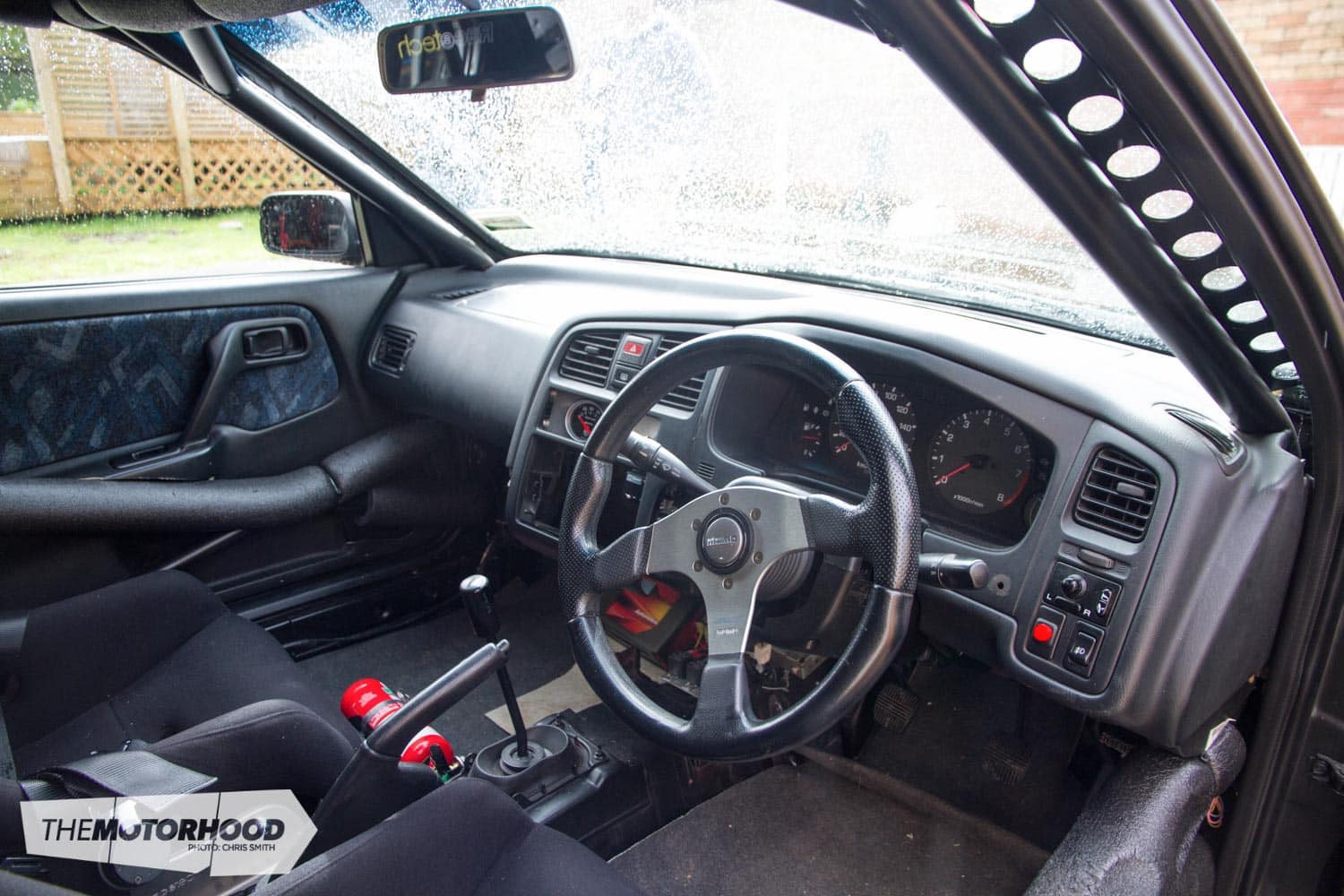
We understand most of this was built at home in the shed — run us through exactly what you fabricated for the Primera.
Basically anything you can see that has been fabricated I have built either in my shed or at my dad’s workshop — from the small aluminium and stainless brackets to the eight-point cage. It has a custom cold-air box, an air filter adaptor plate, custom air intake, stainless four-into-three headers, and extended two-into-one stainless-steel secondaries. The two-into-one collectors were fabricated out of flat stainless-steel sheet, formed into cones then welded together to make the collector shape. I spent some time manually shaping the exhaust ports out of straight pipe, and into the primary bends in the headers. I fabricated the harness- and seat-fixing points and made the roll-cage stiffening gussets from flat rolled steel. The oil catch can was made to fit in behind the cold-air box with some interesting unseen angles. The front flares took some time to form with a set of rollers, a dolly and a hammer, but came up looking pretty good.
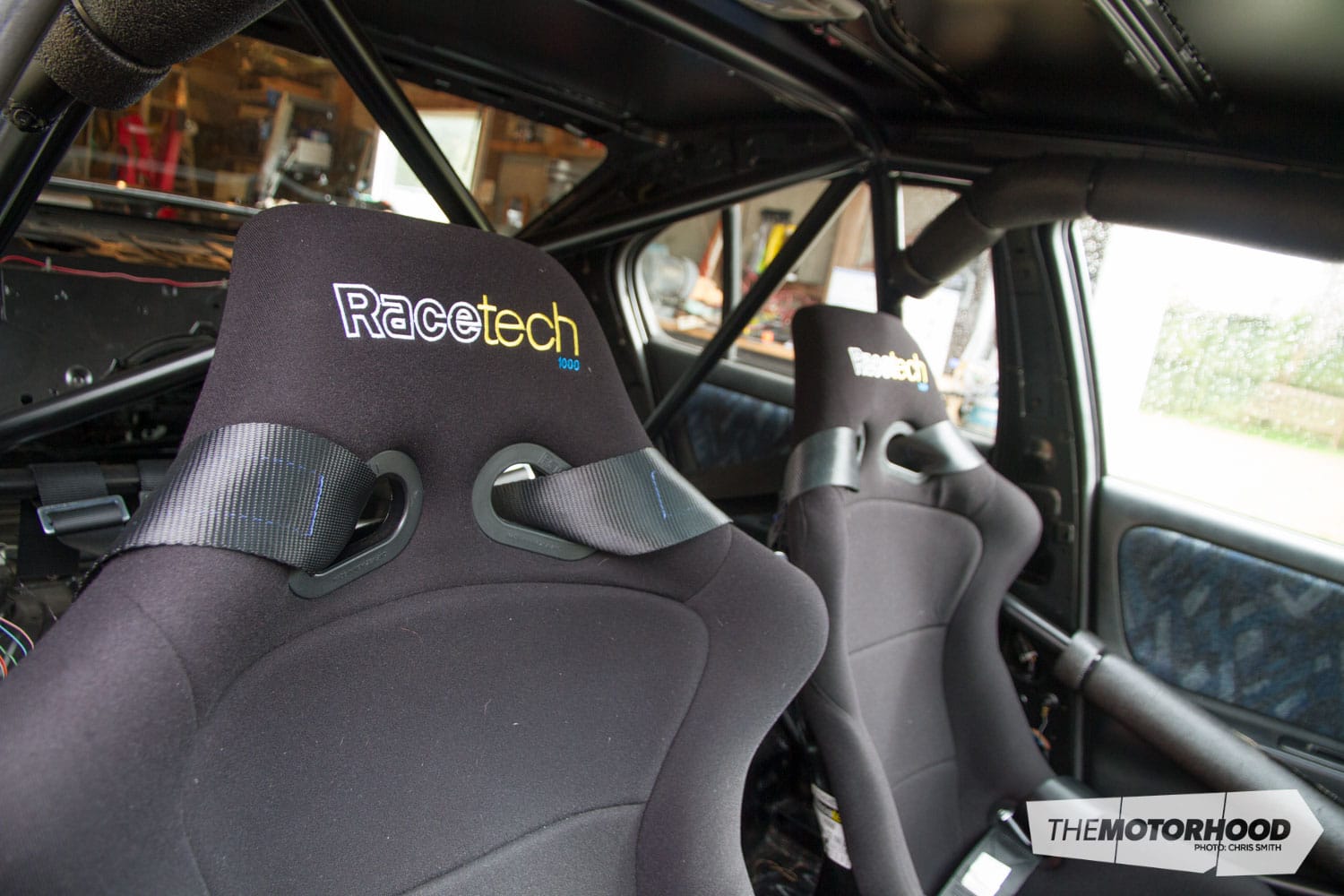
Is fabricating something you’ve always done, or did you pick it up building this car?
I have grown up in my dad’s sheet-metal workshops, so it was always something I was playing around with. I worked for my dad through my holidays while at school and at uni, so I picked up most of what I learned through him. I have made plenty of exhausts, intakes, catch cans, and roll cages for people over the years, but the Primera is the first car I have put them all in one place at the same time.
How competitive has the Primera been in previous hill-climb events?
Club racing is all class based, which is determined by engine capacity plus or minus forced induction. The Primera runs in C class, and it has been very competitive. One of the last bent sprints I competed in I won my class and came fifth overall — beaten by three Subarus and a Series 6 RX-7, but not by much.
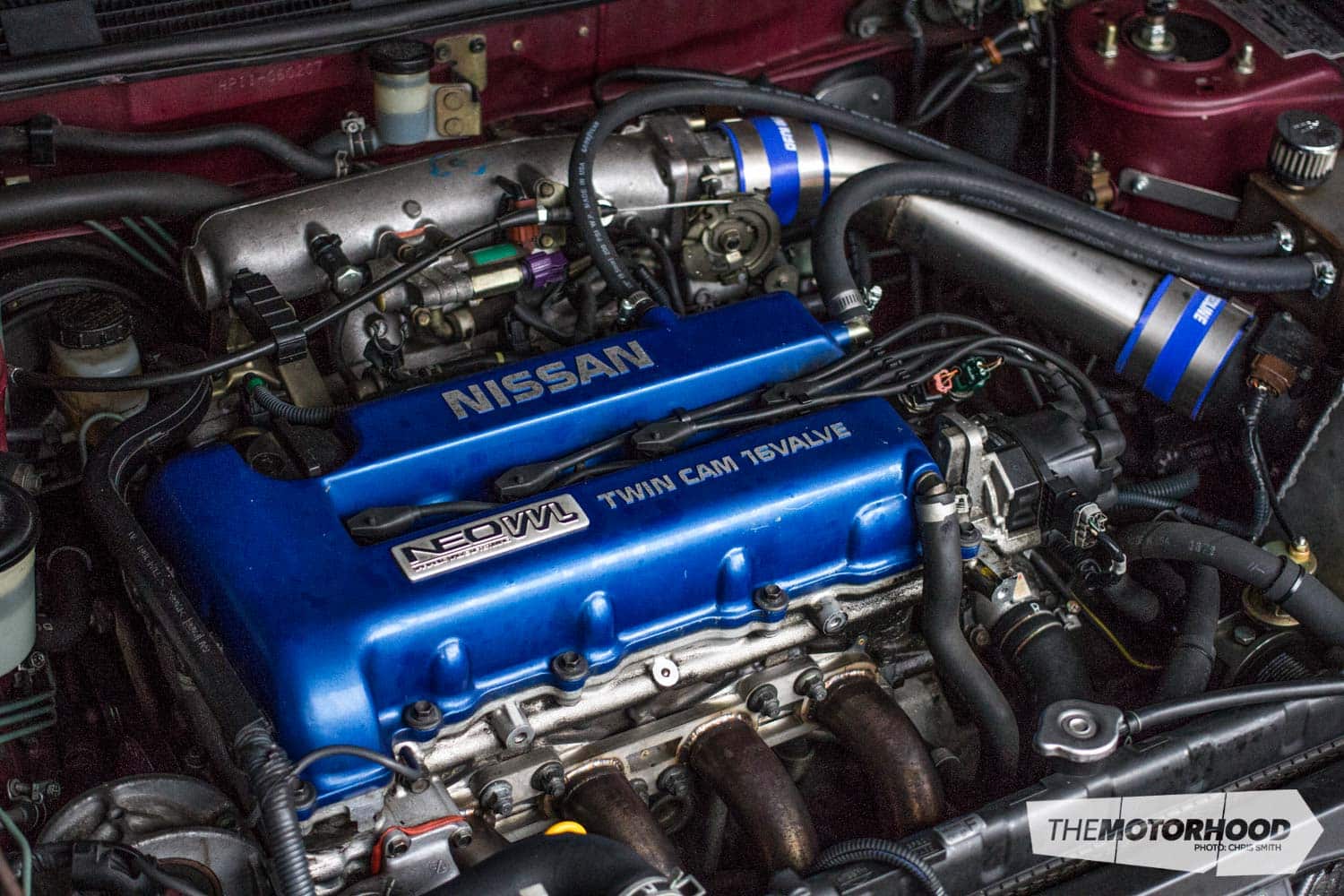
So now that you’ve proved the Primera is fast without upgrading the engine too far, what’s in store next?
I’m going to push it to go through the corners faster — it turns a bit sloppily and needs tightening up. I’ve been toying with the idea of dropping in an SR20DET, or building a monster SR22VE bottom end, but both will end up costing a lot. The Primera needs to go on a diet, and I’ll look at getting a stand-alone ECU to refine the tuning. I’ve recently got into some other projects — I’m starting a scratch-built single seater for which I’m hoping to get a 1:1 power-to-weight ratio (or pretty close) with some serious aero.
Thanks for your time Chris, we hope to catch you at some future hill-climb events.
This article was originally published in a previous issue of NZ Performance Car. Pick up a copy of the edition here:






